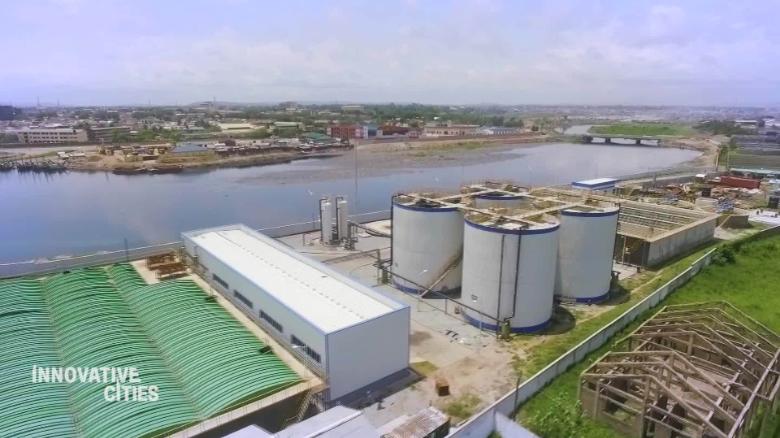Geoffrey Heal, the Donald C. Waite III Professor of Social Enterprise and a Chazen Senior Scholar at Columbia Business School, is the author of "Endangered Economies -- How the Neglect of Nature Threatens Our Prosperity." The opinions expressed in this commentary are the author's. View more opinion articles on CNN.
(CNN)With the plethora of dispiriting reports on climate change -- we recently learned, for instance, that our oceans are warming at least 40% faster than the Intergovernmental Panel on Climate Change originally thought -- many elected officials have taken up the mantle of fighting global warming.
The Green New Deal, spearheaded by New York Rep. Alexandria Ocasio-Cortez and Sen. Ed Markey of Massachusetts, has garnered attention for its ambitious goal of completely shifting to renewable and zero-emission energy over a decade.
Given these research findings and calls for aggressive plans of action, it can be hard to feel at all positive about current efforts to address climate change. But there is good news.
The progress we have made to replace coal and gas as our primary energy sources has already begun to take control of some of the greatest contributors of greenhouse gas emissions. What is even more remarkable is we are doing it at little to no increase to the cost of power, according to my calculations.
Take the United States as an example. Wind and solar power are now on average the least expensive ways of generating electricity. In some locations, wind and solar energy prices are as little as one-third the cost of coal. Even without including the contribution of coal to global warming, it is simply no longer a cost-effective energy source. Wind and solar are now economically sounder investments.
But what about the unreliability of renewable energy sources by comparison?
The United States is working on that, too. Power from windy or sunny days can now be stored in batteries, which has been a tremendous contributing factor to the reduction in the price of renewable energy sources. In addition, there is hydropower, which is renewable, and nuclear energy, which is carbon-free. Both sources are not intermittent, meaning they can be relied upon for constant power, and can complement battery storage and provide backup to renewables. As the Green New Deal gains steam, there is also further hope for an even more concerted economic transition to clean energy jobs and infrastructure.
The increasing sophistication of electric car technology is another mitigating factor. Indeed, several forecasters expect the majority of new cars to be electric by 2040. The two remaining sources of greenhouse gas emissions -- space, water and industrial process heating, and agriculture -- could prove challenging, but if there is a will, there is a way. Meat replacements are now available in many supermarkets, and their widespread adoption will reduce agriculture's contribution to changing the climate.
So how much would it actually cost the United States to replace all fossil fuels as the Green New Deal recommends? Not nearly as much as you might think.
I estimate it would take a gross investment in renewable power plants, extra grid capacity, and storage capacity of about $3.3 trillion over the next 20-30 years (US GDP is about $20 trillion). But the cost is not really all chargeable to the transition to renewables. All our coal plants are old and will have to be replaced well before 2050. This is also true of many of our gas and nuclear plants, regardless of the movement to go carbon-free. That would offset the cost associated with transitioning by about $1 trillion.
In the process of transitioning to a clean energy economy, we would also progressively eliminate the huge cost of fuel, an additional savings of about $1 trillion, by my calculation. Putting those figures in context, after factoring in miscellaneous savings, we are only looking at adding an approximate $1.1 trillion to go carbon-free by 2050 on top of what we're already spending on outmoded forms of energy generation. That breaks down to $34.4 billion per year for the next 32 years -- less than 0.2% of the current GDP. Right now, the United States is spending roughly $50 billion per year on infrastructure for power generation and the grid. So, we do not have to spend more, we just have to spend smarter.
Green New Deal proponents suggest we aim to become carbon-free within a decade or so. Given the sheer volume of investment needed, this is implausible: Midcentury seems the earliest we could reasonably expect to approach this goal.
Stay up to date...
Sign up for our new newsletter.
Of course, climate change is not just a US problem but a global one. My numbers relate to the United States, but the same analysis applies to most countries. Indeed, many other industrial nations are making more rapid progress toward decarbonization than we are. Fossil fuels are less expensive in the United States than most other countries because we produce so much and tax them so lightly -- so if renewables are competitive here, they will certainly be competitive with carbon fuels elsewhere, too.
While we still have quite a way to go, we have begun the journey to a stable climate and a more sustainable economy where we can generate all the electric power we need without fossil fuels. And it may cost less than continuing on our current path.







